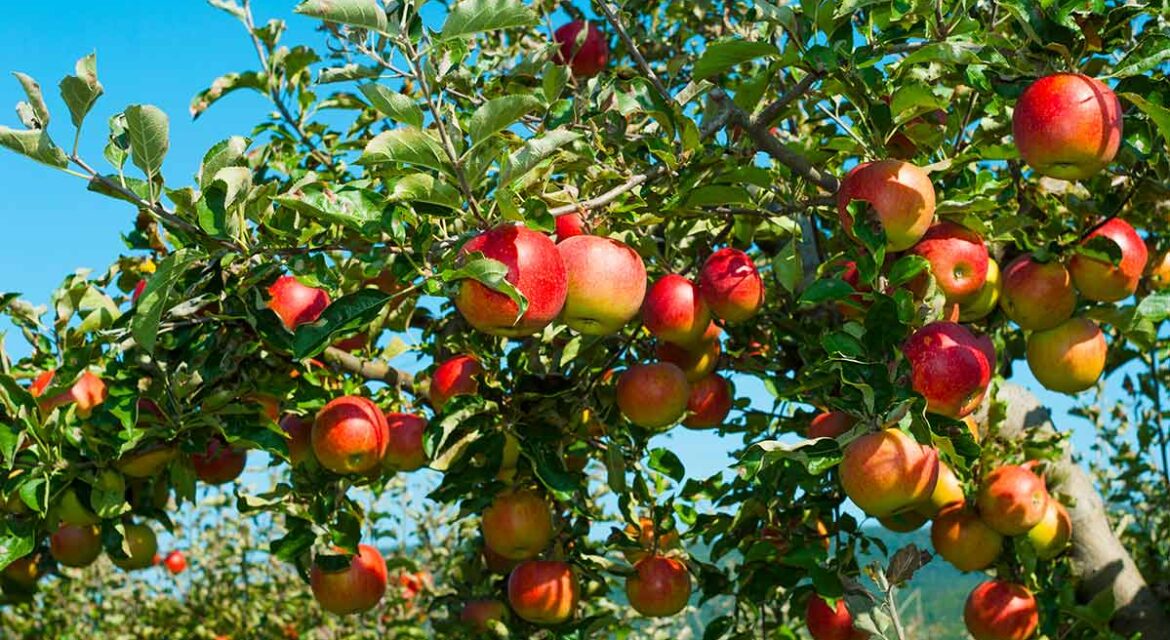If you have planned to plant apples, you should know that there are many diseases that can affect apple trees, some of which are not concerning because most of the damage you can expect is simple cosmetic issues. While other diseases can be more harmful, affecting the quantity of fruit produced or causing the death of the trees. But in any case, you can try to treat the diseases of the apple tree, and the best option is to prevent diseases by planting varieties that are resistant to these diseases.
Therefore, before trying to treat apple diseases, it is necessary to know the best ways to prevent them. So let’s get to know the most common apple tree diseases to prevent them:
Apple Tree Diseases:
-
Try the Apple
-
– Symptoms:
Brown or green spots appear on the apple tree leaves, and they may wrinkle and fall off afterward
Dark green spots appear on the surface of the apple, then they become darker later and crack.
Fruit usually falls off and flowering stops
-
– Treatment:
Prune the infected foliage
Use preventive sprays such as captan, sulfur, or other fungicides.
-
– Risks:
Rarely does apple scab kill the trees, but it may cause complete leaf drop by early summer
Recurrent infection can weaken the tree, making it susceptible to other diseases.
Perfect Whiteness
-
– Symptoms:
The leaves will wither and the growth of the tree will be affected, showing a white powder on your plant’s leaves
The flowers will stop producing fruit, and the leaves and sprouts will turn brown in the summer.
-
– Treatment:
Prune the infected branches and twigs
If the disease is severe, you can use fungicides.
-
– Risks:
It is unlikely to kill your plant, but it will weaken its strength.
It may hinder the growth and flowering of the tree.
Black Rot
-
– Symptoms:
Circular lesions with concentric rings extending to the core of the fruit appear, and these lesions often occur on the side of the apple exposed to direct sunlight.
Mold develops a sour smell when the infected fruits ripen, and it continues to rot and dry.
-
– Treatment:
Remove the diseased fruit, and any bark that has formed in the wood tissue.
Use fungicides every 10 to 14 days during harvest and repeatedly under the preferred conditions of the powdery mildew.
-
– Risks:
Powdery mildew can cause significant damage to your harvest.
Fire Blight
-
– Symptoms:
The leaves or buds turn brown.
Branch damage, with the appearance of cankers.
-
– Treatment:
Eliminate Infected Tissue
Ensure precise pruning and avoid leaving any signs of infection
-
– Effects:
The fireblight can destroy your apple orchard because it affects all the important parts of the tree.
White Mold:
-
– Symptoms:
Small spots or blisters appear on the wood and fruit of the apple tree
The apple begins to form a soft rot
The red color of the apple begins to fade when the white mold develops and solid, rotten areas appear.
-
– Treatment:
Remove shriveled apples and rotten fruit, and prune dead branches
Apply preventive pesticides to ensure the tree is not exposed to stress
Remove dead wood and aquatic trees during drought.
-
– Effects :
If white mold affects your tree, you may lose 50% of your fruit.
Thus, we have learned about the most important diseases of the apple tree that you should be aware of and follow their symptoms to prevent them, and take the necessary measures for treatment quickly before you lose your crop and trees.
You can rely on the best and purest organic fertilizers in the Kingdom to maintain the health of your plants from here: https://blackcow.sa/
Tell us in the comment what are the biggest problems you faced during farming?






